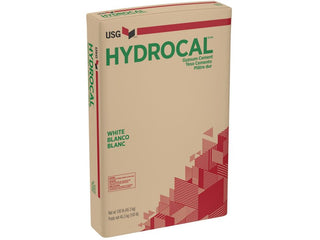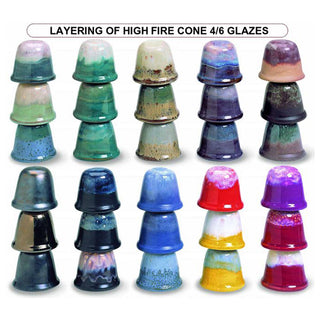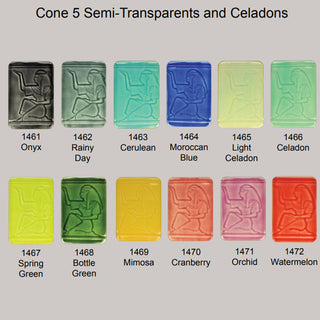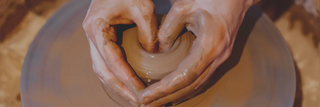U.S. Gypsum WHITE HYDROCAL -REGULAR 50 lbs. Bag
WHITE HYDROCAL is used for making plaster objects, a neutral gypsum cement having a normal set of 25 minutes. When Gypsum Cement is formed under a template it is slightly on the “short side” and has a tendency to tear. The setting expansion is somewhat greater than ULTRACAL 30.
HYDROCAL White Gypsum Cement A neutral gypsum cement having a normal set of 25 minutes. When formed under a template it is slightly on “short side” and has a tendency to tear. The setting expansion is somewhat greater than with A-11 or B-11 cements, but higher wet and dry strength is provided.
Sealers and Parting Compounds
Parting compounds (also called “separators” or “releasers”) are needed to prevent adhesion of plaster or gypsum cement to patterns or models. They also permit removal of plaster or gypsum cement from the surface of the pattern or model upon which it “sets up.” Porous model materials require sealing prior to application of the parting compound.
Sealing
All porous models, patterns and molds must be sealed before the parting agent is applied. Sealing is particularly essential for wood patterns to prevent dampness from causing the wood to swell, resulting in release difficulty. Gypsum cement patterns also require sealing to prevent them from absorbing water from the plaster mix and causing the mix to adhere to the gypsum cement pattern. Patterns of metal, glass, plastic and other impervious materials normally do not require sealing.
A quick-drying lacquer applied by brush or spray gun is an excellent sealer for wood, plaster and gypsum-cement patterns and master models. Two coats of lacquer provide more resistance to moisture than shellac. Correct procedure is to reduce lacquer with lacquer thinner so that the model or pattern readily absorbs the first coat. Apply second coat after first coat has thoroughly dried.Where a plaster or gypsum cement pattern is used, apply lacquer immediately after set.
Mahogany patterns or models require special treatment because gypsum cement casts may adhere to undercuts caused by multiple pores or grain of the wood. A paste wood filler can be used to fill the grain of the wood, but should be reduced to a satisfactory brushing consistency with the recommended thinner. Apply a heavy coat and let it dull down; then wipe off excess by rubbing across the grain. After wood filler has set overnight, apply a coat of a clear acrylic sealer and allow to dry. Sand the pattern or model and apply several coats of a clear lacquer.
Separators
Satisfactory separation agents must provide the following functions:
- Prevent adhesion to the cast.
- Protect and lubricate pattern surface.
- Spread easily and uniformly in a thin, continuous insoluble film.
- Do not react destructively with the plaster or gypsum cement surface, or with the pattern.
Some of the most common and widely used separators are as follows:
Soaps—A number of special “potter’s” soaps are available for use as parting compounds. “Green soap” (a liquid) is an effective parting compound when cut 10 to 1 with distilled water. Apply parting soap with a sponge and work into plaster surface. Several coats may be required on a new mold. Remove excess soap with a clean wet sponge before pouring mold.
Stearic Acid and Kerosene (Stearine)—Formula: 1/4 lb. stearic acid shaved to flakes; 1 pt. kerosene.
Melt stearic acid by warming:
remove from heat source and add kerosene with constant stirring until a uniform mixture is obtained. Apply to pattern with a soft brush, preferably camel’s hair or sable hair. If brush marks show, thin mixture with more kerosene or by warming. This separator is one of the most widely used of all parting compounds and is particularly recommended for use with glue molds. Petroleum Jelly (Vaseline)—Formula: 1 part petroleum jelly; 2 parts kerosene. Use petroleum jelly if it is cut back with approximately two parts kerosene to one of jelly. Blend mixture by carefully heating and thoroughly stirring (Caution—Fire Hazard).
Apply the casting cement as a thin coat and brush out thoroughly.
For special purposes, separators other than the above may be advantageous:
Light Lubricating Oil—Use sparingly.
Light Mineral Oil—Particularly effective as a fine fog spray on metal patterns. Must be thinned to be effective.
Olive Oil—May be used if applied carefully while warm. Crisco and other similar hardened vegetable oils used as frying fats are particularly recommended for use on lacquered wood.
Powered Mica—Has been found useful when finely ground and added to most parting compounds. Satisfactory results have been obtained by adding 1/4 to 1/2 cup of the powdered mica to 1 qt. of parting compound solution.
EPOXICAL® Mold Sealer Separator—Works well as a release agent of gypsum cements.
Thin EPOXICAL Mold Sealer Separator as it comes in the can, using white gasoline or kerosene at a ratio of 1-to-1 by volume. Apply a generous coat to the pattern: allow to dry 2 to 3 minutes and then wipe off excess with a soft cloth.
ULTRACAL MIXING INSTRUCTIONS:
Normal Consistency 33 - 38 lbs. water/100 lbs. product (15 - 17 kg water/45 kg product) Hand Mix Vicat Set, Target 18 - 30 minutes Compressive Strength, One Hour After Set 2000 psi (13.8 MPa) Compressive Strength, Dry 6500 psi (44.8 MPa) Density, Wet 116 lbs./cu. ft. (1858 kg/m3) Density, Dry 103 lbs./cu. ft. (1650 kg/m3) pH Reaction Alkaline % Expansion, Final 0.08%
NOTE The Typical Physical Properties in the above table were achieved under controlled laboratory conditions with freshly produced material, results may vary.
Use potable water at temperatures between 70 °F (21 °C) and 100 °F (38 °C). Because variations in slurry (USG Ultracal 30 Gypsum Cement and water mixture) temperature produce variations in set time, it is important to keep both the USG Ultracal 30 Gypsum Cement and water in a stable temperature environment prior to use. The higher the temperature of the slurry, the shorter the set time. Conversely, the lower the temperature of the slurry, the longer the set time.
Weigh both the USG Ultracal 30 Gypsum Cement and the water prior to use for each mix. The water-to-USG Ultracal 30 Gypsum Cement ratio is critical because it governs the strength and the density of the final cast. Sift or strew USG Ultracal 30 Gypsum Cement into the water slowly and evenly. Do not drop large amounts of USG Ultracal 30 Gypsum Cement directly into the water as proper soaking of the USG Ultracal 30 Gypsum Cement may not occur. USG Ultracal 30 Gypsum Cement should be fully dispersed in the water prior to mixing. Small batches require less soaking time than large batches.
Mixing USG Ultracal 30 Gypsum Cement slurry is one of the most important steps in producing USG Ultracal 30 Gypsum Cement casts with optimal strength, absorption, hardness and other important properties. Mechanically mixed slurries develop uniform casts with optimal strengths. USG Ultracal 30 Gypsum Cement can be mechanically mixed through both batch and continuous processes. Proper blade and bucket dimensions are important for obtaining the best batch mix (see USG IG503 Plaster Mixing Procedures for details). Longer mixing times result in higher mold strength and shorter set times.
POURING DRYING STORAGE AND USE PRODUCT INFORMATION See usg.com for the most up-to-date product information. DANGER Causes skin irritation. Causes serious eye damage. May cause cancer by inhalation of respirable crystalline silica. Do not handle until all safety precautions have been read and understood. Avoid breathing dust. Use only in a wellventilated area, wear a NIOSH/MSHA-approved respirator. Wear protective gloves/protective clothing/eye protection. If swallowed, inhaled, or skin irritation occurs get medical attention. When mixed with water, this material hardens and becomes very hot sometimes quickly. DO NOT attempt to make a cast enclosing any part of the body using this material. If on skin: Wash with plenty of water. If in eyes: Rinse cautiously with water for several minutes. Remove contact lenses and continue rinsing. Wash contaminated clothing before reuse. Dispose of in accordance with local, state, and federal regulations. For more information call Product Safety: 800-507-8899 or see the SDS at usg.com KEEP OUT OF REACH OF CHILDREN.
. NOTICE We shall not be liable for incidental or consequential damages, directly or indirectly sustained, nor for any loss caused by application of these goods not in accordance with current printed instruction or for other than the intended use. Our liability is expressly limited to replacement of defective goods. Any claim shall be deemed waived unless made in writing to us within thirty (30) days from date it was or reasonably should have been discovered.
SAFETY FIRST! Follow good safety/industrial hygiene practices during installation. Wear appropriate personal protective equipment. Read SDS and literature before specification and installation. To prevent air entrainment and provide a uniform, smooth surface, careful pouring of USG Ultracal 30 Gypsum Cement slurry is necessary. Agitation of the filled mold is a further step used to prevent air at or near the mold surface. Whenever possible, USG Ultracal 30 Gypsum Cement slurry should be poured carefully in the deepest area so that the slurry flows evenly across the surface of the case mold. Pouring a large amount of slurry directly on the face of the case mold may result in slight densification of the USG Ultracal 30 Gypsum Cement mold at the point where it strikes the surface of the case. This produces a hard spot, giving uneven absorption.
All casts should be dried as quickly as is safely possible after manufacture so that maximum physical properties can develop. Dry to a constant weight. The best drying rooms or ovens provide 1) uniform and rapid circulation (minimum of 15-30 fps (4.6-9.1 mps)) of air with no “dead spots” having little or no air movement, 2) equal temperatures throughout the entire area, and 3) provisions for exhausting a portion of the air while replacing it with fresh air. High humidity surrounding the drying room or oven inhibits drying efficiency because the air pulled into the room is incapable of picking up much moisture from the molds. The maximum temperature at which USG Ultracal 30 Gypsum Cement molds are safe from calcination is 120 °F (49 °C). With substantial free water in the mold, a higher drying temperature can be used initially without difficulty. As drying progresses, the temperature must be reduced to prevent calcination. Before removing molds from the dryer, the temperature should approach that of the area around the dryer to prevent thermal shock.
CUSTOMER REVIEWS - Q&A
Got a question about this product? Ask it here and get a response from our staff and also input from the Sheffield Pottery community!











